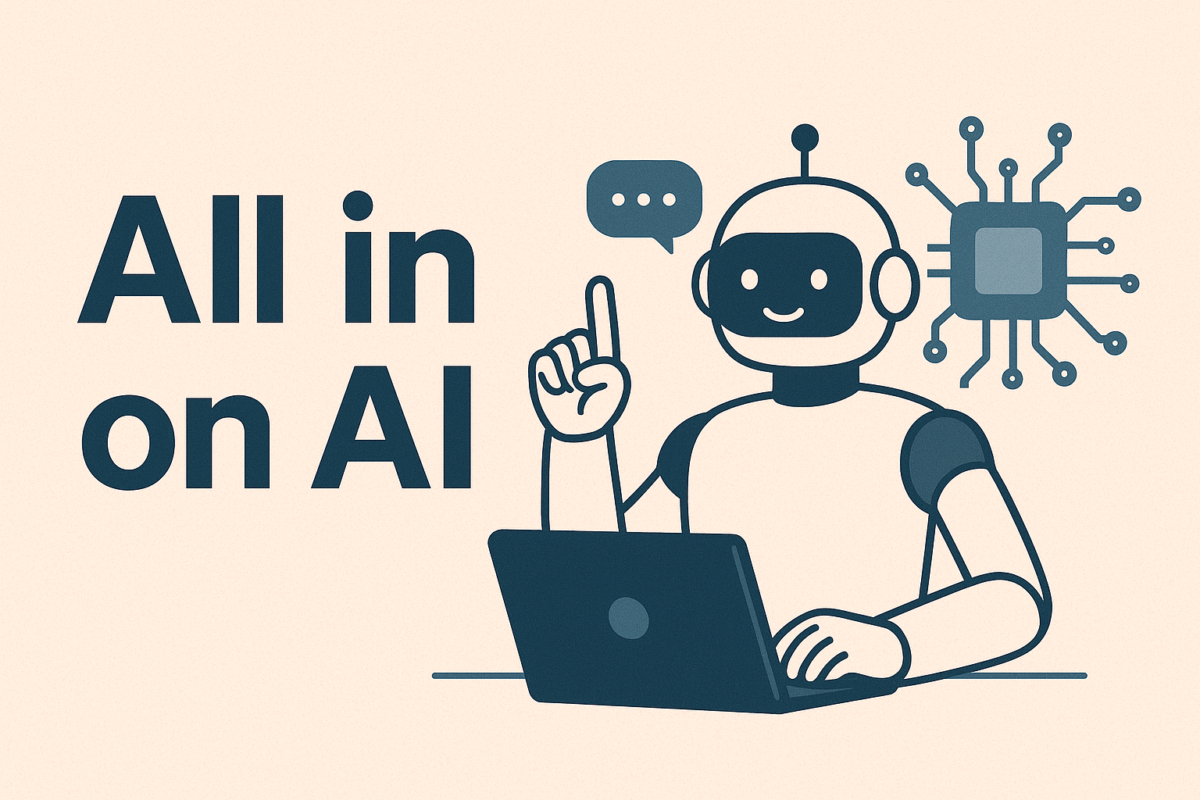The content creation landscape has been irrevocably changed. With the rise of sophisticated generative AI, a question is no longer if you should use AI, but how much—and the answer, for a surprising number of brands, should be a resounding: 100%.This might sound like heresy to some content purists. We’ve all heard the warnings about the loss of the “human touch,” the dangers of generic output, and the potential for losing your distinct brand voice. These are valid concerns, but they all depend on one critical factor: survival.
If your brand is already a functional, surviving entity, and it can maintain that level of success (or even see improvement) by switching entirely to AI-generated content, then the decision is simple, pragmatic, and unavoidable. You should embrace the machine.
Here’s why the undeniable benefits of time and cost savings make the case for going all-in on AI, provided your brand can handle it.
The Two Non-Negotiable Wins: Time and CostIn business, time is money, and efficiency is the new competitive edge. AI content generation doesn’t just offer marginal improvements; it delivers a fundamental, paradigm-shifting reduction in both:
1. Unmatched Cost Reduction
The numbers speak for themselves. Numerous industry reports show that AI-generated content can be significantly cheaper than human-written content. This savings is not just an arbitrary percentage; it’s a massive operational advantage.
Labor Costs Plummet: AI tools can create content outlines, first drafts, social media captions, and product descriptions in minutes, eliminating hours of human labor. This reduces the need for large, costly in-house teams or extensive freelance budgets.
Scale Without Overheads: Need to publish 50 articles a week instead of five? AI makes scaling content volume practically free at the point of production. You can dominate long-tail keywords or flood multiple social channels without hiring a single new writer.
Reinvestment Fuel: The money saved on content production can be immediately funneled into other critical business areas—like product development, customer service, or, ironically, better AI tooling and oversight.
2. Time-to-Market at Light Speed
The content creation pipeline—from ideation and briefing to drafting, editing, and final publication—is notoriously slow. AI tears that pipeline apart and rebuilds it as a conveyor belt.
Instantaneous First Drafts: The most time-consuming part of content creation is often the initial draft. AI generates a starting point—or even a final piece—in seconds, allowing your team (if you keep one) to focus purely on high-level strategy and optimization.
Rapid Adaptation & Localization: Need to adapt a blog post into 10 social media posts, a short video script, and a newsletter excerpt? AI can instantly repurpose content across platforms, localizing it for different segments or languages faster than any human could.
Continuous Improvement: AI can instantly analyze content performance, identify patterns in successful pieces, and feed those insights back into the prompt for the next article. This creates a data-driven, closed-loop system for efficiency and effectiveness that is impossible to replicate with human speed.
The Crucial Caveat: The Survival ThresholdThis aggressive adoption strategy only makes sense if your brand has cleared the most important hurdle: Can the AI-generated content meet your brand’s core requirements for success?
If your brand’s unique value proposition must rely on an inimitable human voice, deeply nuanced subject matter expertise, or a high degree of emotional storytelling, then 100% AI will likely fail.
However, many brands—especially those focused on B2B informational content, product descriptions, news aggregation, SEO-driven traffic, or standardized consumer information—don’t require that level of human-intensive input. For them, “good enough” is the new “optimal.”
If your data shows that AI-written content:
Maintains or Grows SEO Traffic: The content ranks, and the audience finds it.
Does Not Damage Brand Perception:
Customers do not complain, leave, or question the brand’s integrity.
Drives Conversions: The content still moves the needle on the desired business outcome….then the human element is, purely from a business efficiency standpoint, a luxury you can no longer afford.A Prudent Path ForwardEmbracing 100% AI content doesn’t mean hitting ‘Generate’ and walking away. It means redefining the human role from creator to steward: * The Human as Prompt Engineer: The new human skill isn’t writing; it’s crafting the perfect, most detailed prompt to guide the AI to maintain brand voice, style, and accuracy.
The Human as Fact-Checker & Editor: A crucial step remains: a swift human review to eliminate “hallucinations,” ensure factual accuracy, and check for legal compliance (like copyright).
The Human as Strategist: Humans are now free to focus on the big picture: market strategy, creative concepting, and building truly human relationships outside of the content production line.
The truth is, for many brands, the audience doesn’t care who wrote the guide to their widget or the breakdown of a new regulation—they care that the information is accurate, timely, and easy to consume.
If your brand is one of the lucky few that can survive and thrive with the scale and speed of purely AI-driven content, the choice is clear. Stop paying the premium for the human element and start leveraging the massive time and cost savings that the AI revolution has unlocked. It’s not about being cheap; it’s about being smart.
